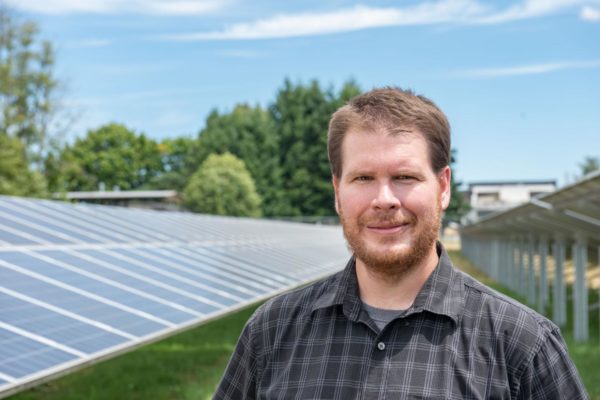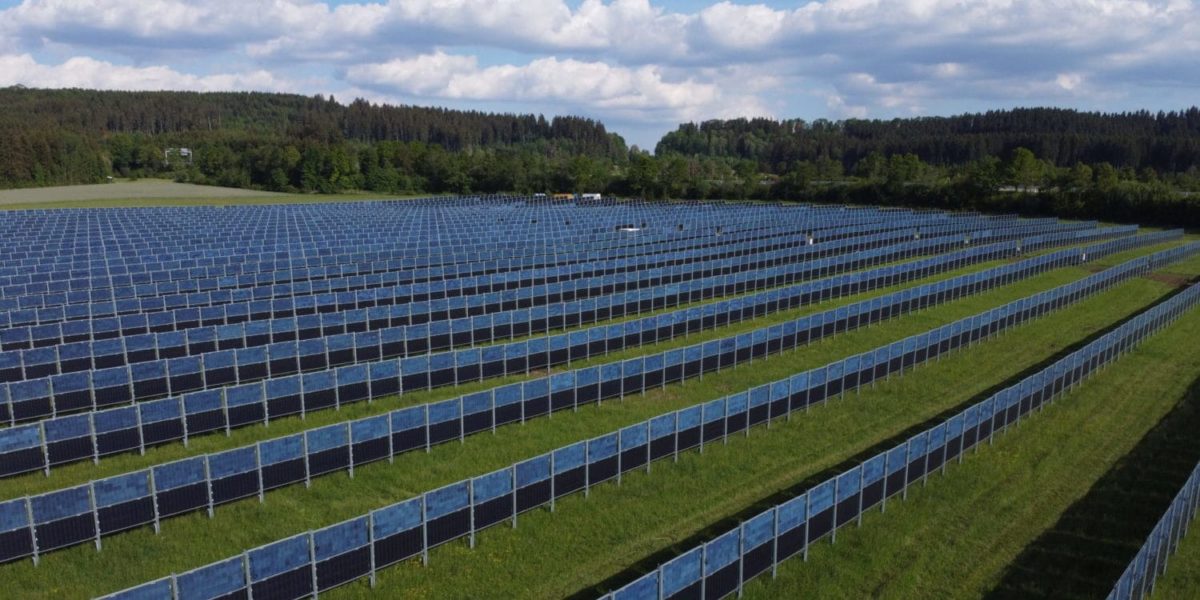Using land for both solar photovoltaic power and agriculture could provide 20% of total electricity generation in the United States, according to a new paper by Oregon State University researchers.
Wide-scale installation of agrivoltaic systems could lead to an annual reduction of 330,000 tons of carbon dioxide emissions in the U.S. while “minimally” impacting crop yield, the researchers said.
Agrivoltaics provide a “rare chance for true synergy: more food, more energy, lower water demand, lower carbon emissions, and more prosperous rural communities,” said Chad Higgins, an associate professor in Oregon State’s College of Agricultural Sciences and the senior author of the paper published in the journal Sustainability.

The paper finds that an area about the size of Maryland would be needed if agrivoltaics were to meet 20% of U.S. electricity generation. That’s about 13,000 square miles, or 1% of current U.S. farmland.
The cost of the agrivoltaic arrays would be $1.12 trillion over a 35-year project life. The researchers said they believe that the private sector would invest most of the construction costs, with the federal government contributing rebates and other incentives.
Using money generated from the PV arrays, it would take about 17 years to pay back the $1.12 trillion, the researchers estimate. After the projected 35-year project lifespan, the arrays would produce $35.7 billion in annual revenue.
Adoption barriers
The Oregon State research is not the first in the field. Research led by the University of Arizona’s Greg Barron-Gafford, and published in Nature Sustainability in September 2019, found that shading crops with PV panels can provide multiple benefits, including greater food production, reduced plant drought stress, and a drop in solar panel heat stress.
The Arizona team’s results were based on a dryland farming system and suggested that an agrivoltaic system may be a resilient energy and food system. The researchers warned, however, of “probable barriers to wider adoption,” including challenges associated with mechanized farming and harvesting, along with the additional costs of elevating PV arrays to allow for food production.
SolarPower Europe launched in early 2020 a new working group devoted to agrivoltaics. The aim of the group is to boost the deployment of agrivoltaics across Europe by shaping the EU’s agricultural and energy policy agendas.
And in October, German solar developer Next2Sun flipped the switch on an agrivoltaic project in the southern German state of Baden-Württemberg. The 4.1 MW solar project spans around 14 hectares. It was built with roughly 11,000 n-type PERT bifacial solar modules, each with 380 W of power, provided by Chinese manufacturer Jolywood. They were vertically installed on 5,800 racks.
On the farm
Back in Oregon, Higgins said he plans to install a fully functional solar farm designed to prioritize agricultural activities on five acres of Oregon State’s North Willamette Research and Extension Station near Portland. Ground is expected to be broken in May, with production expected to start in 2022.
Higgins said that the wide-scale installation of agrivoltaic systems opens the door for other technologies. For example, surplus energy generated by the solar arrays could be used to power electric tractors or to generate fertilizer on a farm. And, low-cost sensors could be installed on the solar panel platforms to support artificial intelligence-based decisions to improve agricultural productivity.
This content is protected by copyright and may not be reused. If you want to cooperate with us and would like to reuse some of our content, please contact: editors@pv-magazine.com.









There is only ONE PROBLEM in AgriVoltaics (AV) in providing ALL THE ENERGY in virtually any country in the world.
That problem is hesitation and inability of the entrenched industries and their partner banks and financial institutions to “let go” and let the farmers prosper…. how dare they.
All the Worlds Energy in 2050 of 200,000TWhrs/yr with a 150TW AV System can be installed on 1 Million km2 of the 15Million km2 of Agricultural Land (<7%) with lots and lots of "Spare Land" for future Growth/Demands.
However, one finds lots of "research money" being spent on locating Solar facilities in exotic and way-out locations (Mines, Barren Land, Oceans, Lakes, etc.. etc..) when so much "developed" Agricultural land is available for AV to benefit Urban and Rural Societies all over the world.
If the world focuses its full attention on the Supply Side of Energy by using AV and upgrade the Grid, then there is REAL CHANCE to eliminate Man-Made Pollution by 2050 and save Millions of Lives and hundreds of Millions of Suffering.
This also enables the Users (the Demand Side of the Energy Riddle) to focus on Converting their Processes, Equipment, Facilities and Products from Polluting Fossil Fuels to Solar Electricity.
Unless BOTH the Supply and Demand Side of Energy convert to Clean, Sustainable and Abundant Solar Electricity, it will not be possible to eliminate those Deaths and Suffering and secure Zero Pollution by 2050 for All.
There is a way to store energy using this system, produce energy biomass instead of food!
This seems contra to farming, but if you merge agrivoltaics with vertical trays and eutrophic waters you can produce aquatic biomass.
The products would be energy rich biomass, cleaner water, CO2 capture and recovery of nutrients that would be returned to farms.